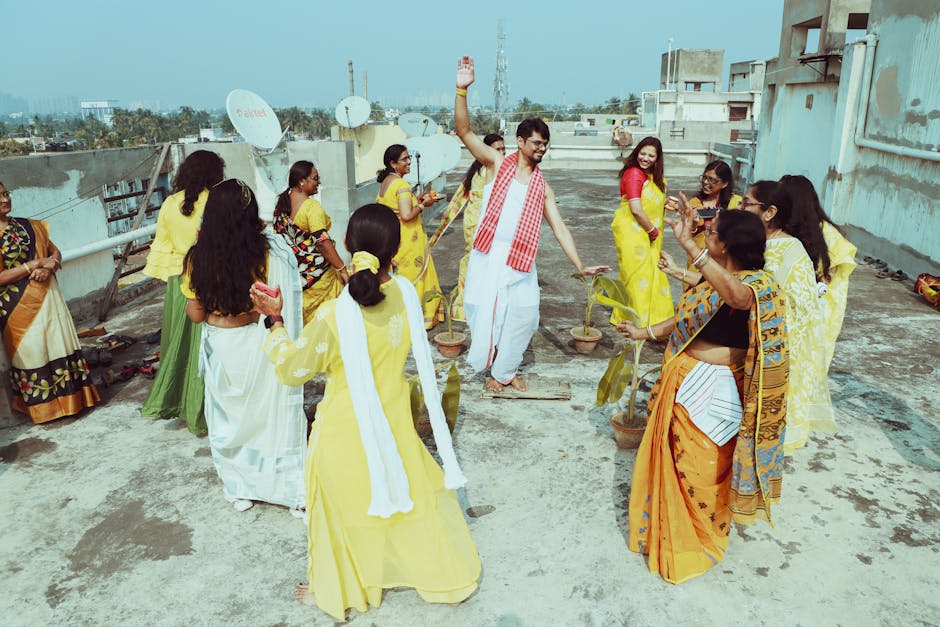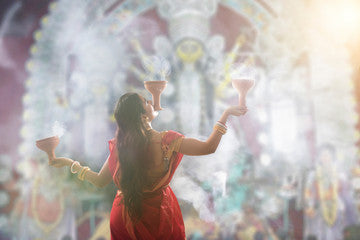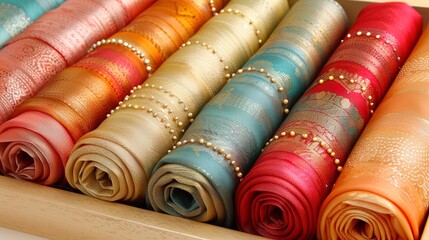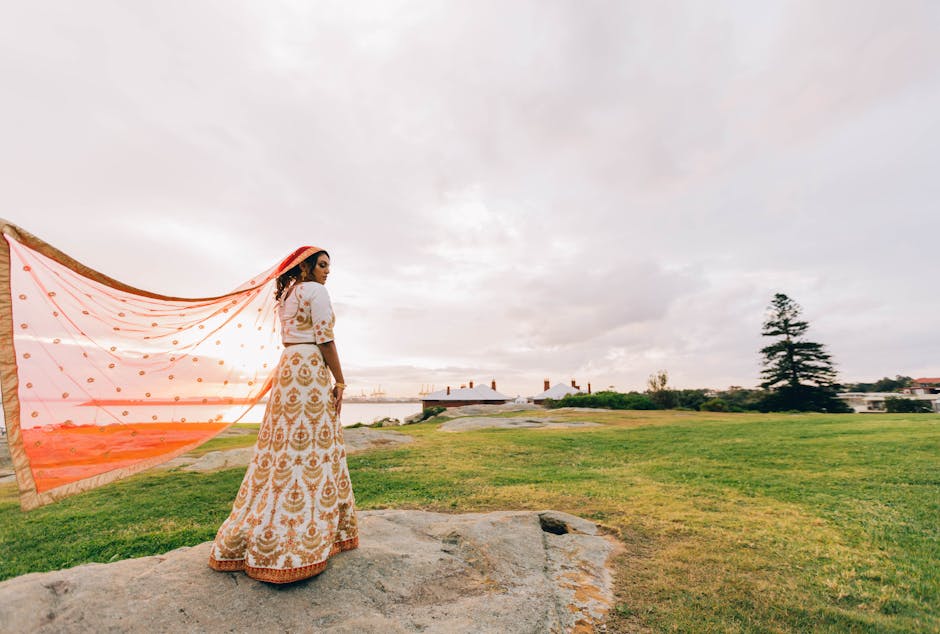The Rich Tradition of Handloom Sarees in Bengal: A Cultural Heritage
Introduction to Bengal’s Handloom Sarees
Bengal’s handloom sarees are a significant part of Indian cultural heritage, known for their unparalleled beauty and intricate craftsmanship. These sarees come from centuries-old tradition, passed down through generations of weavers in Bengal. They are not just garments but a form of art, symbolizing the rich cultural fabric of the region. Each saree tells a story of patience, skill, and dedication. From the famous Tant to the luxurious Baluchari, these weaves reflect the diversity and creativity of Bengal’s artisans. The making of a handloom saree involves a lot of hard work and precision, often taking weeks or even months to complete one. The designs, often inspired by nature and mythology, showcase the weavers’ deep connection with their surroundings and heritage. Owning a Bengal handloom saree means wearing a piece of Indian history and supporting the livelihood of these skilled artisans.
Historical Background of Handloom Sarees in Bengal
Bengal has always been a rich hub for handloom sarees, with its tradition stretching back centuries. The art of weaving these sarees began in the Mughal era, flourishing under their patronage. It’s not just about making a piece of cloth; it’s about weaving stories, traditions, and the rich cultural heritage of Bengal into the fabric. These sarees, known for their intricate designs and fine texture, were once the attire of the nobility and the wealthy.
As time went by, the popularity of these sarees spread far and wide, becoming a symbol of Bengali identity and elegance. The British colonial period saw a decline in this art form due to the import of cheaper, mass-produced textiles. However, post-independence, there was a resurgence in the popularity of handloom sarees as symbols of national identity and self-reliance.
Today, handloom sarees from Bengal like Jamdani, Tant, Baluchari, and Kantha, are not just pieces of clothing. They are masterpieces of craftsmanship, each telling a unique story of the weaver’s vision, skill, and dedication. Wearing a handloom saree from Bengal is like draping yourself in the history and heritage of Bengal, a legacy passed down through generations, preserved in threads of silk and cotton.
The Art and Craftsmanship Behind Handloom Sarees
The making of handloom sarees in Bengal is an art form that dates back centuries, involving skill, patience, and creativity. Weavers use their hands to operate the loom, crafting each saree with intricate designs and patterns. It’s not just about weaving; it’s about preserving a tradition that tells tales of Bengal’s rich culture and history. The process starts with choosing the right thread, which is then dyed using vibrant colors. Next comes the weaving, where weavers bring those colors to life in the form of beautiful patterns—each telling a unique story. These sarees are more than just attire; they’re pieces of art, showcasing the craftsmanship of the weavers. The dedication and time invested in each piece make handloom sarees stand out. This craftsmanship is what keeps the tradition alive, making each saree a cherished item, not just in Bengal but worldwide.
Major Types of Bengal Handloom Sarees
Bengal handloom sarees are famous worldwide for their intricate designs and vibrant colors. Key types include Tant, Baluchari, Jamdani, and Kantha. Tant sarees are known for their lightweight and breathable cotton, perfect for the hot climate. Baluchari sarees showcase mythological scenes on their borders and pallu, woven with silk thread. Jamdani is a form of fine muslin adorned with intricate floral and geometric designs, a UNESCO protected craft. Lastly, Kantha sarees stand out for their hand-embroidered patterns, using simple running stitches to create beautiful motifs. Each type holds a piece of Bengal’s rich cultural fabric, embodying the skill and tradition passed through generations.
The Cultural Significance of Handloom Sarees
Handloom sarees from Bengal aren’t just pieces of fabric; they’re stories woven into threads, heralding the rich cultural tapestry of the region. Think of them as more than attire; they represent a legacy. These sarees carry centuries of tradition, with each pattern, color, and weave speaking volumes about the heritage and pride of Bengal. Artisans pour their heart and skill into creating these masterpieces, preserving ancient techniques passed down through generations. Wearing a handloom saree from Bengal is akin to embodying the essence of its culture, showcasing the region’s history and artistic prowess. In festivities, ceremonies, and daily life, these sarees symbolize respect for the past and a bridge to the future. They stand as a testament to the resilience and creativity of the Bengali people, ensuring that their cultural identity thrives with every drape. So, when you choose a handloom saree, you’re not just picking a garment. You’re embracing a piece of Bengal’s soul.
How Handloom Sarees are Made: The Weaving Process
Making handloom sarees is an art passed down through generations in Bengal. It starts with choosing the right thread, often silk or cotton, depending on the saree type. Artisans dye these threads in vibrant colors before setting them up on the loom. The weaving begins on a traditional handloom, a process requiring skill and patience. The weaver uses a set of pedals and a shuttle to intertwine the colored threads, creating intricate patterns and motifs that tell stories of Bengal’s rich culture. This process can take weeks or even months, depending on the saree’s complexity. Each saree reflects the weaver’s dedication, making handloom sarees not just clothing but pieces of art.
The Role of Handloom Sarees in Bengali Festivals and Traditions
In Bengal, handloom sarees are not just clothing; they’re a vibrant expression of culture and tradition, especially during festivals. These sarees carry the essence of Bengali identity and are a staple in celebrations like Durga Puja and Poila Boishakh (Bengali New Year). During Durga Puja, women drape themselves in traditional Baluchari or Jamdani sarees, showcasing intricate designs that tell tales of mythological events and cultural stories. Similarly, Poila Boishakh sees a sea of women wearing white sarees with red borders, symbolizing prosperity and peace. It’s more than fashion; it’s a ritualistic embrace of heritage. Handloom sarees also play a pivotal role in weddings, with brides often choosing Banarasi silk, known for its opulent embroidery and elegance. Through these festivals and traditions, handloom sarees weave not just fabric but also stories and bonds that define Bengali culture across generations.
Challenges Facing the Handloom Saree Industry Today
The handloom saree industry in Bengal, known for its cultural richness and tradition, faces several hurdles today. First, competition from power looms and mass-produced textiles has significantly impacted the market. These mass-produced alternatives, often cheaper and quicker to make, have lured customers away from the authentic and intricately designed handloom sarees. Second, the cost of raw materials like silk and cotton has surged, making it tougher for weavers to keep prices competitive without compromising on quality. This situation poses a real threat to maintaining the delicate balance between affordability and maintaining the craft’s integrity.
Moreover, the younger generation’s interest in pursuing handloom weaving as a profession is dwindling. The allure of more stable jobs in urban areas, coupled with the arduous and time-consuming nature of handloom weaving, has led to a shortage of skilled artisans. This decline in artisans threatens the industry’s survival and the preservation of this traditional art form.
Lastly, there’s a noticeable gap in marketing and innovation strategies. Many weavers and small-scale producers lack the resources or knowledge to market their sarees effectively in a digital world. This limitation restricts their reach to a broader audience that appreciates and is willing to invest in handloom sarees for their authentic quality and cultural significance.
To navigate these challenges, it’s crucial for stakeholders, including the government, to step in with supportive policies, training programs aimed at innovation and skill development, and initiatives that enhance market access and visibility for Bengal’s handloom sarees. Without concerted efforts, the industy risks losing not just its economic vitality but a priceless piece of cultural heritage.
Preserving the Tradition: Efforts to Sustain Handloom Saree Weaving
Handloom saree weaving in Bengal is not just about making clothing; it’s about preserving a rich cultural tradition passed down through generations. Yet, this tradition faces challenges like modernization, competition from cheaper, machine-made fabrics, and a dwindling number of skilled weavers. However, efforts to sustain this craft are gaining momentum. Organisations and government bodies are stepping in to support weavers through training programs aimed at both refining their skills and teaching them about modern designs. Financial assistance and marketing support are also provided to help these artisans reach a wider market. Moreover, the revival of interest in ethnic and traditional wear among the younger generation is creating new opportunities for handloom sarees. Fashion designers are incorporating handloom fabrics into their collections, thereby elevating the status of these traditional sarees. Through these combined efforts, the goal is to ensure that the art of handloom saree weaving in Bengal thrives, keeping the tradition alive for future generations.
Where to Find and How to Care for Bengal Handloom Sarees
Finding Bengal handloom sarees is easier than you might think. Start with local markets in Bengal where these sarees are typically sold. For those not in Bengal, plenty of online stores specialize in handloom sarees. Just be sure to buy from reputable sellers to ensure authenticity. Markets like Dakshinapan in Kolkata or Biswa Bangla stores are great places to start. Caring for your Bengal handloom saree requires attention. First, always dry clean them for the first few washes. Hand-washing in cold water with a mild detergent is fine afterward but avoid wringing or twisting the saree. Instead, gently squeeze out excess water. It’s also crucial to store them in a dark, dry place to prevent fading and keep them folded with zari inward to protect against tarnishing. Remember, these sarees are more than just clothing; they’re a piece of cultural heritage needing care and respect.






